
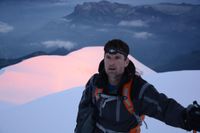
Multiday trekking trips are the ultimate outdoor adventure. There’s nothing quite as liberating as hiking a long trail or walking a self-mapped-out circuit, exploring a coastline or meandering through a mountain range under your own steam. Spending each night out amid the peaks – watching the setting sun set the summits ablaze in the evening and then seeing the landscape blush with the first flush of a new dawn a few hours later – is a genuinely unforgettable experience.
As the planet turns, however, and the seasons change, colder conditions mean you have to cart ever more stuff with you in order to comfortably enjoy tent-based backpacking experiences. This is especially true in alpine areas – many of which strongly discourage camping anyway, except in a few strictly prescribed places.
Foot-powered forays into the mountains are fantastic, but even when you have a good backpacking tent, a lightweight sleeping bag, an inflatable sleeping mat and a small stove, it can all get pretty bulky and heavy when you’re hulking a backpack full of autumn camping essentials up those high hills, and you still have to cart all your food of top of all that gear.
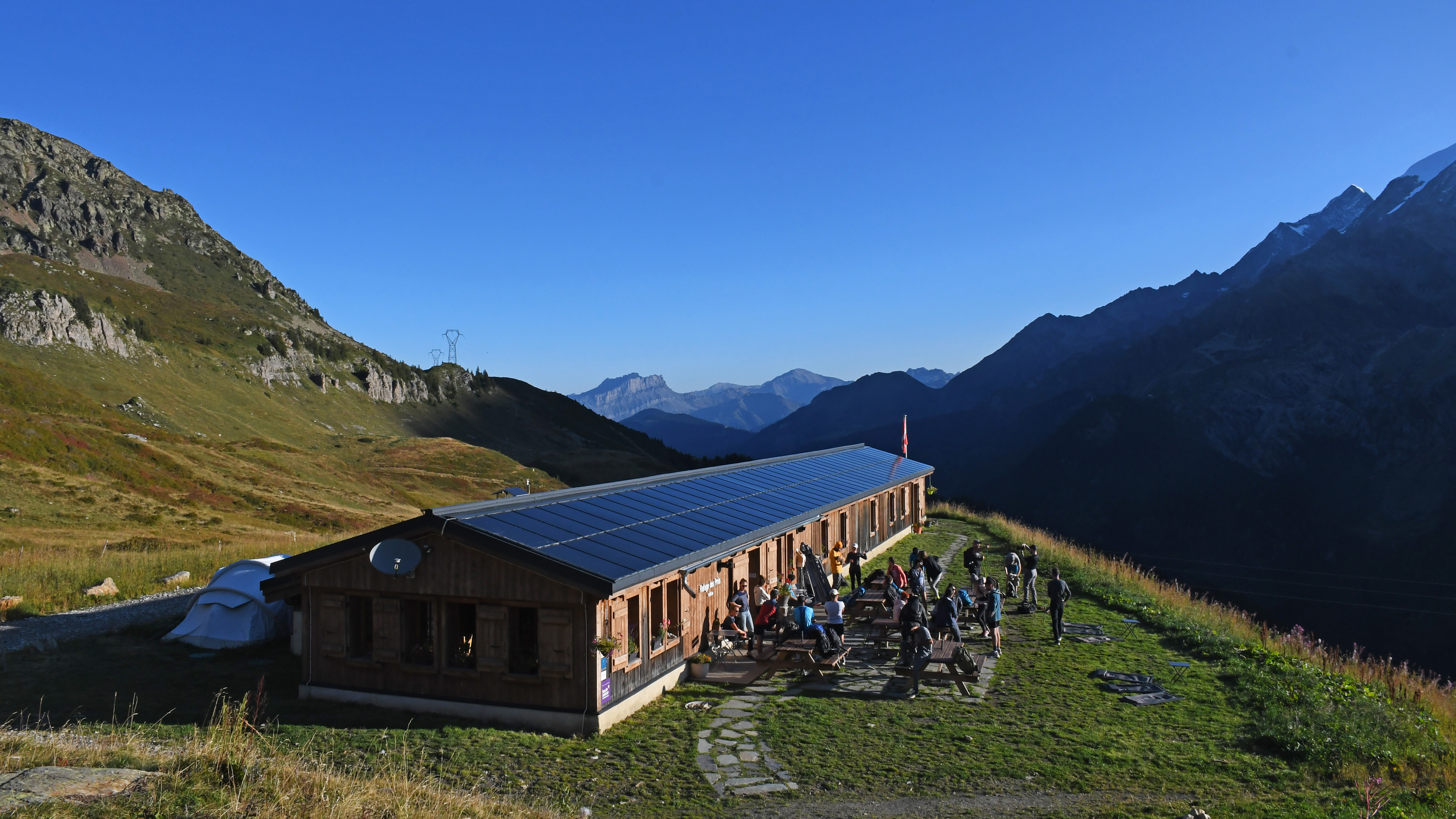
Le Refuge des Prés
But you don’t necessarily have to camp. An excellent alternative to sleeping under canvas is to try hut-based hiking, where you walk during the day, carrying a relatively small pack, and stay overnight in a more permanent structure, known variously – depending on where you are in the world (because these sleeping sanctuaries are found everywhere from the European Alps to North America, Japan and Australasia) – as mountain or backcountry huts, hüttes, hostels, cabins, refuges, refugios, rifugios, yamagoya and numerous other names.
When you’re staying in a hut, you can pack much more sparingly and get away with carrying a relatively lightweight daypack. All you really need is a sleeping bag liner (bedding is supplied in most huts), hiking clothing, a head torch and some trekking poles. Even if you get your walking boots, hiking socks and outdoor jackets wet, you can usually air them in a drying room so they’re good to go the following day.
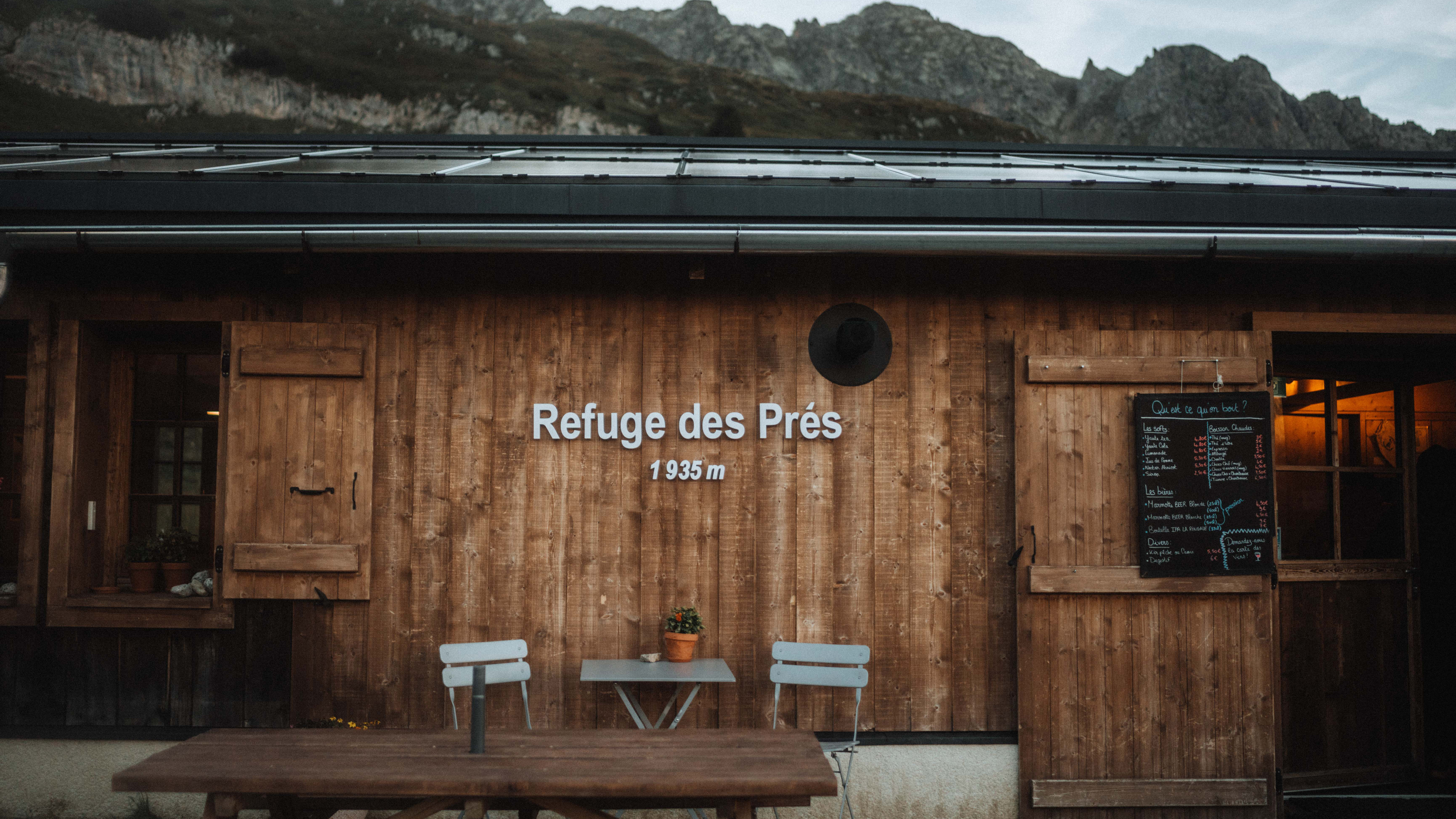
Autumn in the Alps
Recently, I was lucky enough to experience an autumn trekking escapade in Les Contamines Montjoie, hiking in the Haute-Savoie, around the Mont Blanc massif amid the Auvergne Rhône Alpes in France.
Setting off from the forest-flanked surrounds of Notre-Dame de la Gorge, an outrageously pretty alpine hamlet where an ornate 13th-century pilgrimage chapel lies nestled in the arms of the foothills, we trekked up a trail that traces an old Roman route to Le Refuge des Prés [external link], a spectacular hut hugging the hillside at 1935 metres above sea level.
Get all the latest news, reviews, deals and buying guides on gorgeous tech, home and active products from the T3 experts
This relatively new refuge offers excellent half-board hospitality (evening meal, breakfast and a bunk in a shared dorm) for just €72 per night per adult. Chucked in for free are eye-watering views across the rugged roof of Europe to the snow- and ice-capped peak of Mont Blanc and immediate access to myriad paths that spiral off from the hut door to explore the natural wonders of the Réserve naturelle nationale des Contamines-Montjoie [external link].
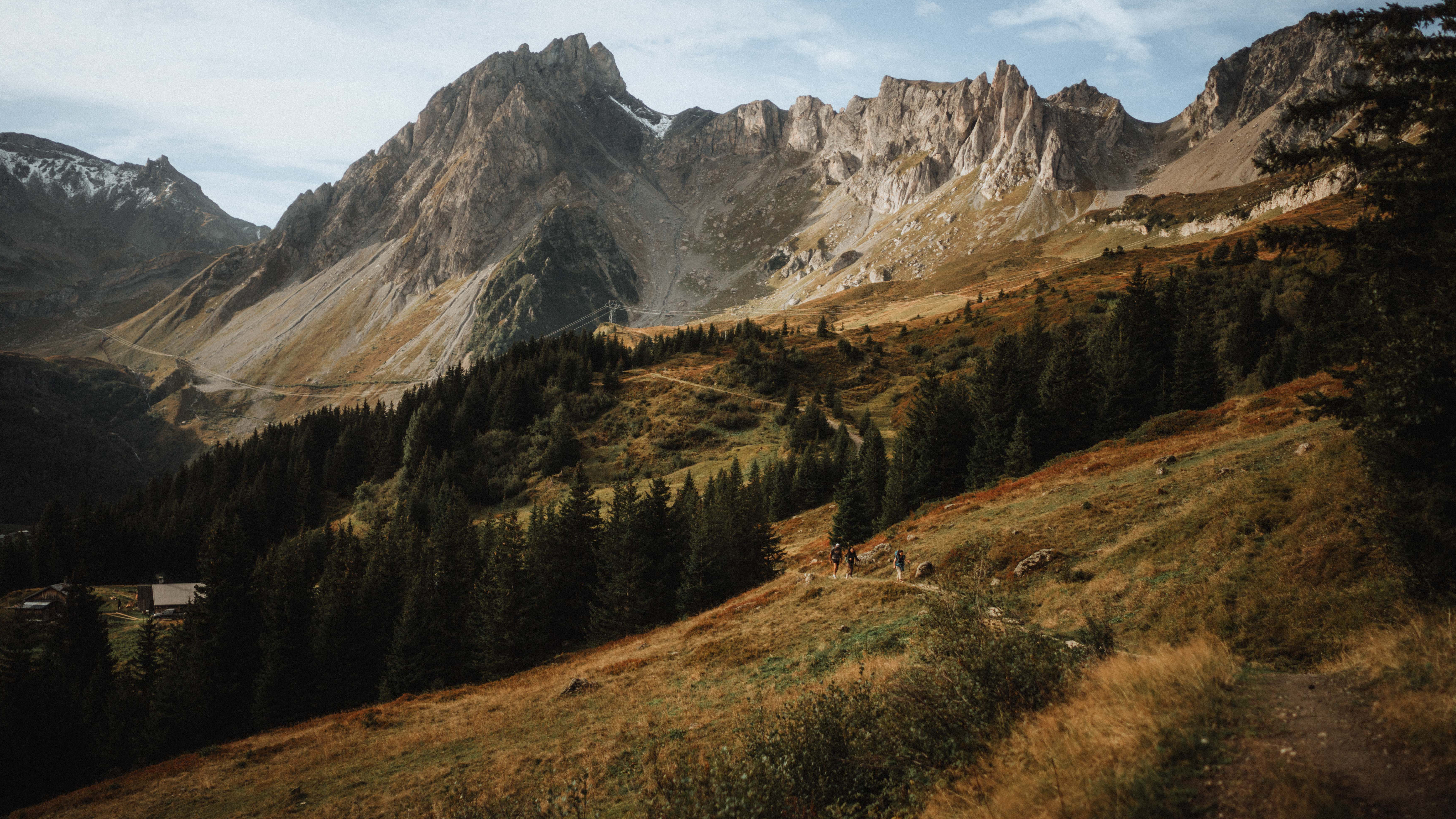
The beauty of Les Contamines Montjoie
We spent several days trekking the treasure trove of trails that wend through France’s longest and highest nature reserve, which sprawls across a vast amount of tall terrain, stretching skywards from 1,100m at the gateway village to the lofty 3,892m spike of l’Aiguille Nord Tré la Tête. Across this protected area, bearded vultures and golden eagles soar over peaks, and wild wolves roam the mountainside as they hunt for marmot, ibex, chamois and ptarmigan.
On several occasions we heard and spotted marmots while out walking, and thanks to the extra space in our backpacks, created by not having to carry camping gear, we’d been able to bring good binoculars and proper cameras along for the ride, so I was able to enjoy looking at them up close, and even managed to capture a few fairly decent shots of their furry faces.
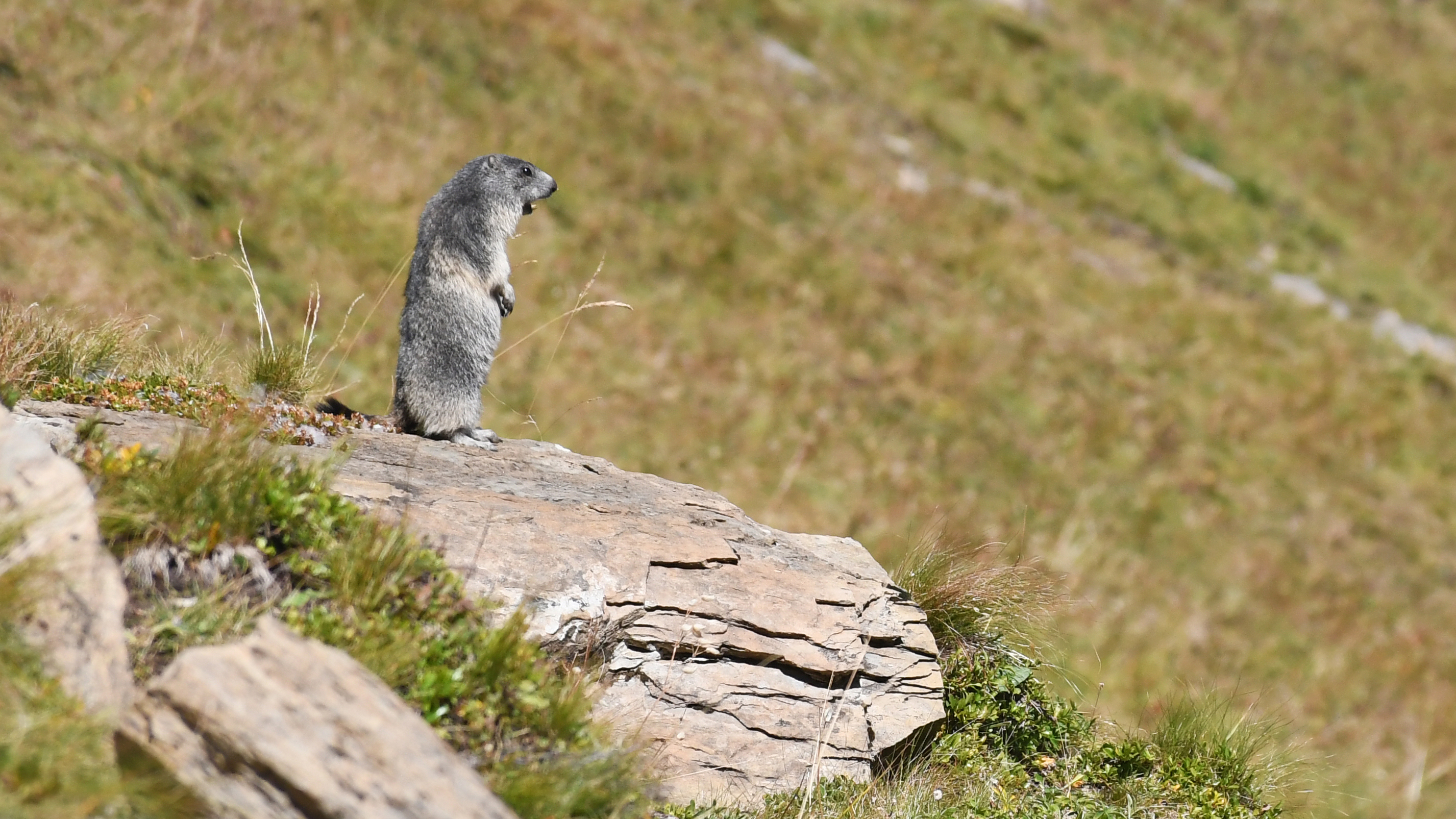
A marmot sounds the alarm
In the excellent company of explorer Jeremy Vaugeois and members of the community based Hike Society , and led by outdoor athlete and mountain leader Caroline Freslon and guides from her company 5 Éme Élément [external links], our alpine adventures took us from the refuge to high passes including Col du Bonhomme and Col de la Fenêtre. After each amble we returned to the hut to enjoy restorative ales and local wines (sipped while sat in deckchairs looking out across the vertiginous vista) followed by fantastic fondue feasts.
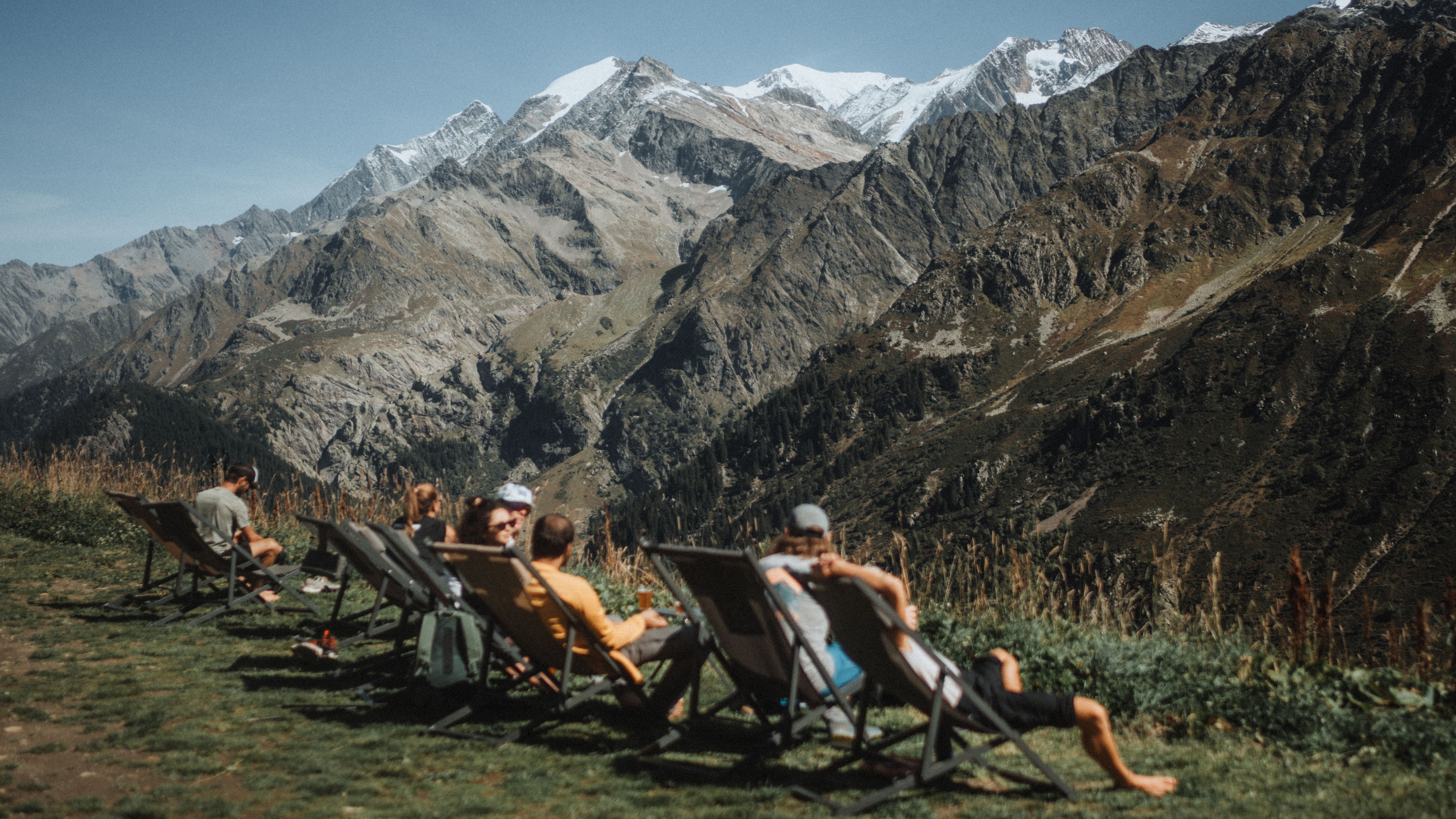
Chilling in front of the hut, looking out at the iced summit of Mont Blanc
The main purpose of the trip was to test the new fall-focussed 2023 Titanium range from Columbia [external link] in the kind of conditions and terrain it was designed to perform in, but while there I made a fantastic discovery: the shoulder season is the absolute best time to enjoy hut-based hiking adventures. Following are a handful of reasons why.
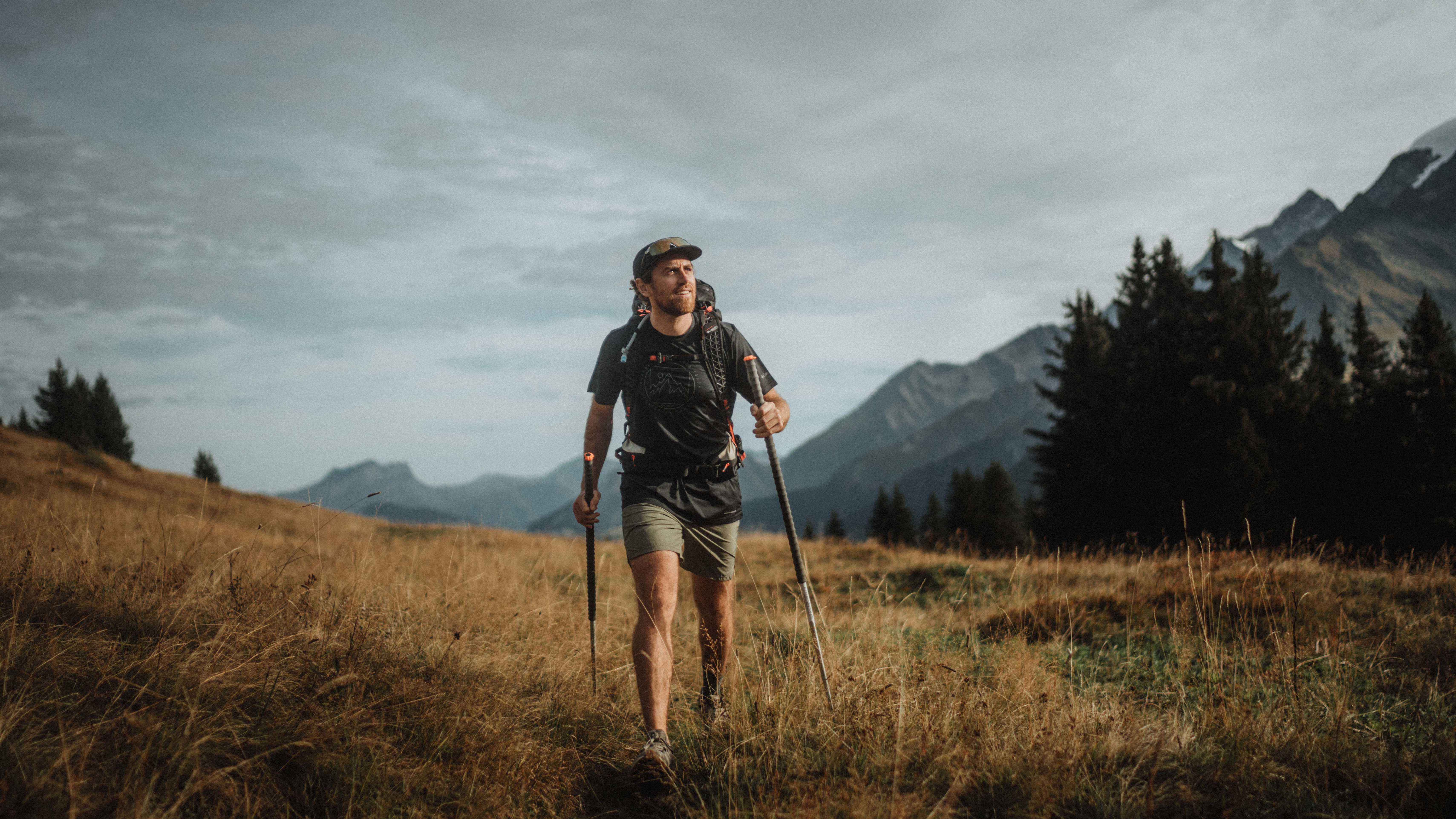
Explorer Jeremy Vaugeois joined us for the journey
The joy of travelling light
I love backpacking and camping, but being able to set off on a multiday hike carrying just a daypack with some spare clothes, a sleeping bag liner and a few essentials is a really fantastic feeling. During a hut-based hiking escapade you get all the adventure for a fraction of the weight penalty.

Hearty hiking fuel is on offer in mountain huts
In summer you can spend hours lounging around outside your tent before the sun finally sinks behind the horizon, but as we move into autumn, darkness descends ever earlier, and evenings get increasingly cool and long when you’re confined to a small space. Huts, on the other hand – most of which are staffed – offer warmth, company, often a bar, and even entertainment in the form of board games and sing songs with fellow hikers from all over the world.
And on top of all that, of course, you get facilities including toilets, warm showers and drying rooms.
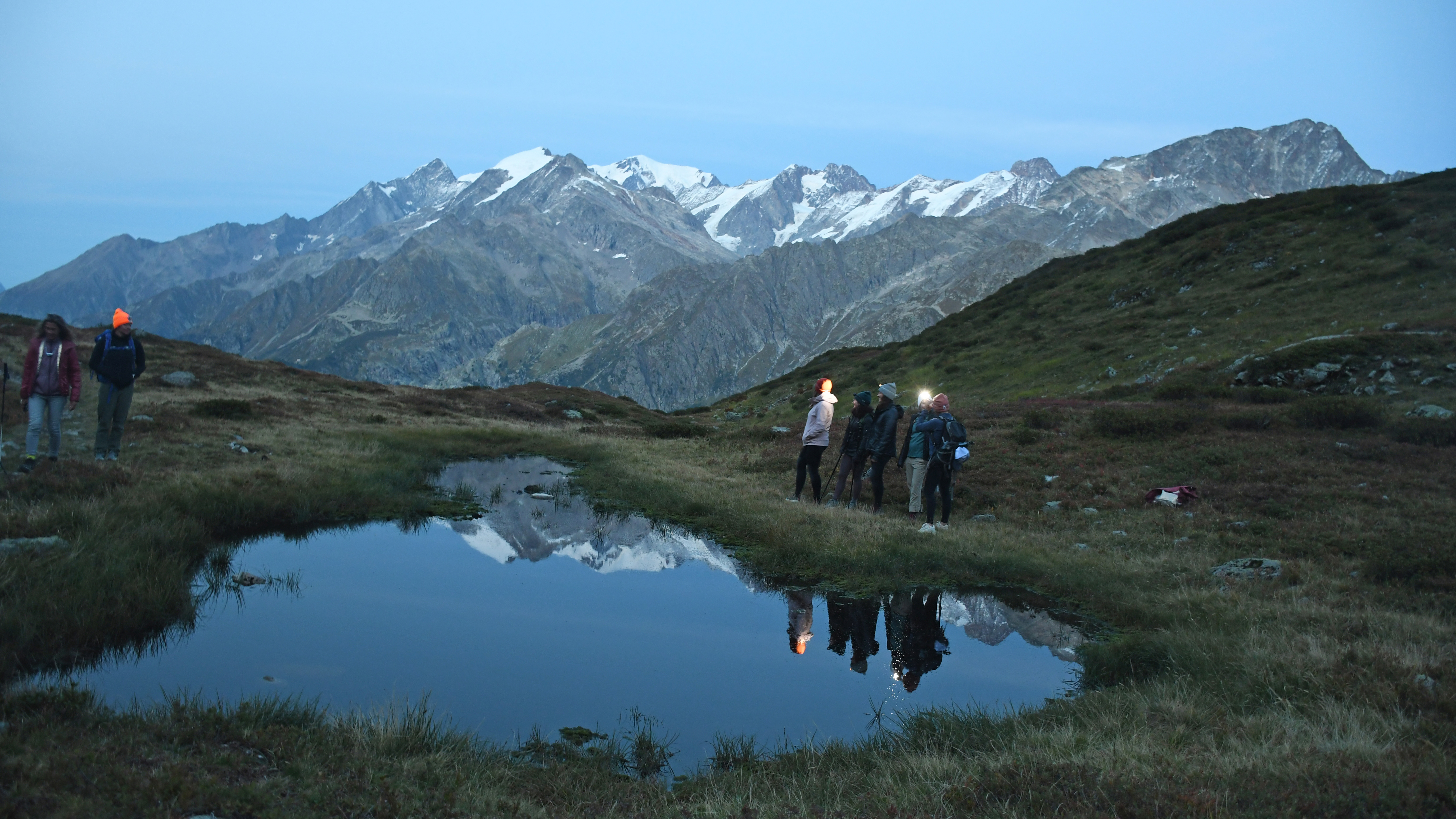
Mont Blanc reflected in a hanging pond en route to Col de la Fenêtre
Embrace the night
Taking shelter in a refuge doesn’t mean you have to miss out on the excellent stargazing opportunities that the mountains typically deliver, especially in autumn. From the warmth of the hut you can wander off to spots where there is zero light pollution, and that extra space in your pack means that you might even have room to bring a pair of sky scraping binoculars along for the adventure, so you can really galavant around the galaxy, before scooting back inside for some schnapps.

Vie from the front of Le Refuge des Prés
Dodge the crowds
The attractions of staying in a hut at any time are manifold, but in the height of summer the trails in popular walking areas can get extremely busy and it’s very hard to find a hut with vacancies. Not all mountain huts in the Alps stay open year round, but some – like Le Refuge des Prés – operate for around 10 months of each year, spanning all four seasons (often shutting for a few weeks towards the end of autumn to prepare for winter, and again in spring to prepare for the busy summer season).
Staying in refuges and shelters in the shoulder season means you can sometimes score a dorm room just for you and your walking buddy, and usually enjoy erstwhile heavily trafficked trails in relative solitude, which makes them feel properly wild. We had the paths around Refuge des Prés virtually to ourselves, which is all the more amazing when you consider that tracks like the Tour du Mont Blanc (route of the Ultra-Trail du Mont Blanc [external link] running race) get upwards of 60,000 people hiking them each year.
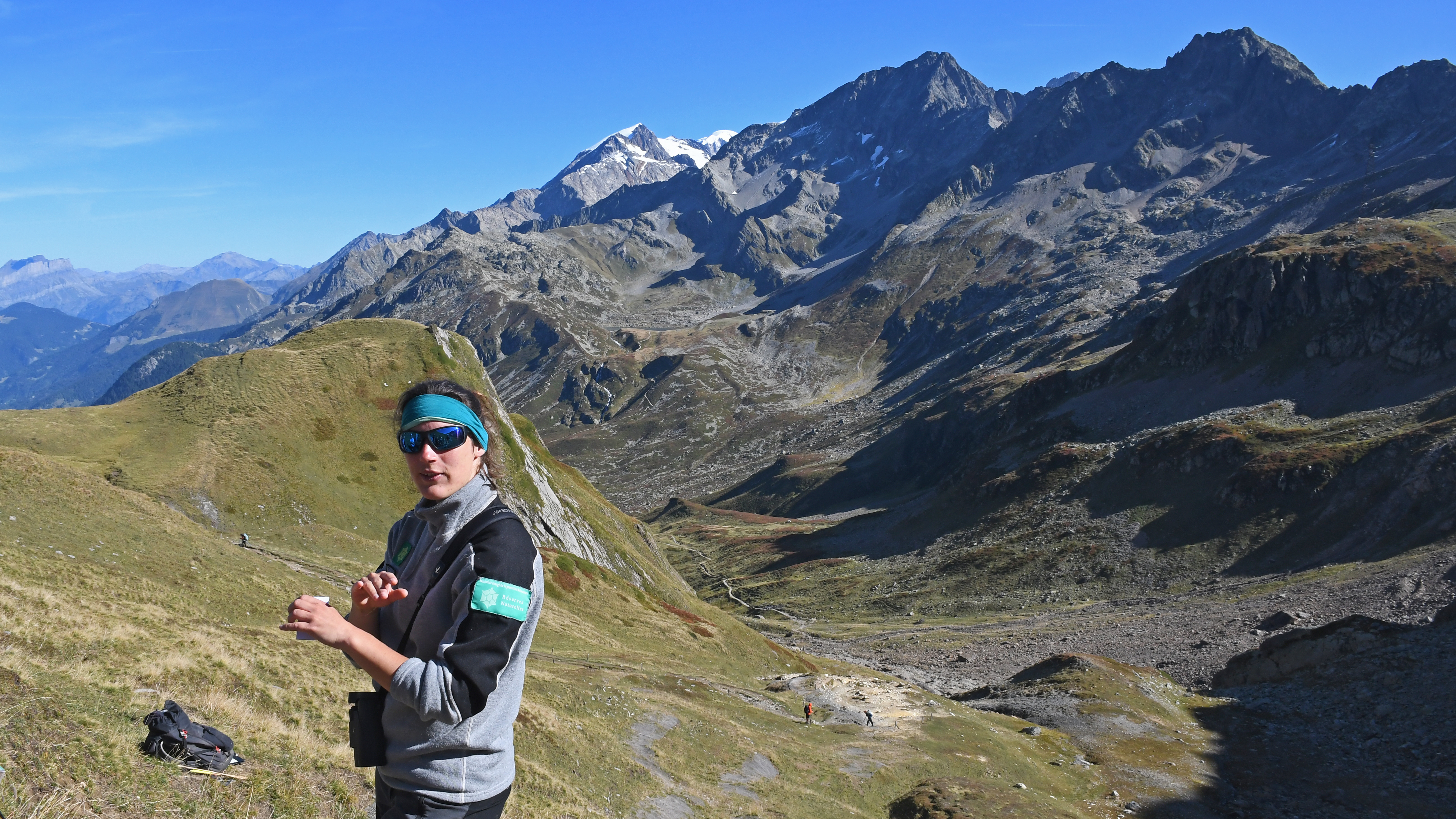
Maïlys Cochard explains the fragility of the terrain
Reduce stress on the environment
Avoiding the busy season isn’t just good for you, spreading the footfall is also much better for the fragile flora and fauna typically found in alpine areas. Maïlys Cochard, who works as an officer for the Service Réserves Naturelles as a conservatrice de la réserve naturelle des Contamines-Montjoie, explained to us at length how damaging it can be for extremely delicate plants and reclusive animals when large groups of walkers stray off the paths.
Maïlys showed us areas where she and her colleagues were helping to protect and restore sections of landscape next to heavily used trails, such as the Plan des Dames and the paths around the banks of the picturesque and ever-popular Lacs Jovet. Some places are so beautiful they’re being loved to death, especially in the post-Covid world we now inhabit, but staying in a hut and hiking responsibly outside of peak season reduces the pressure placed on the environment.
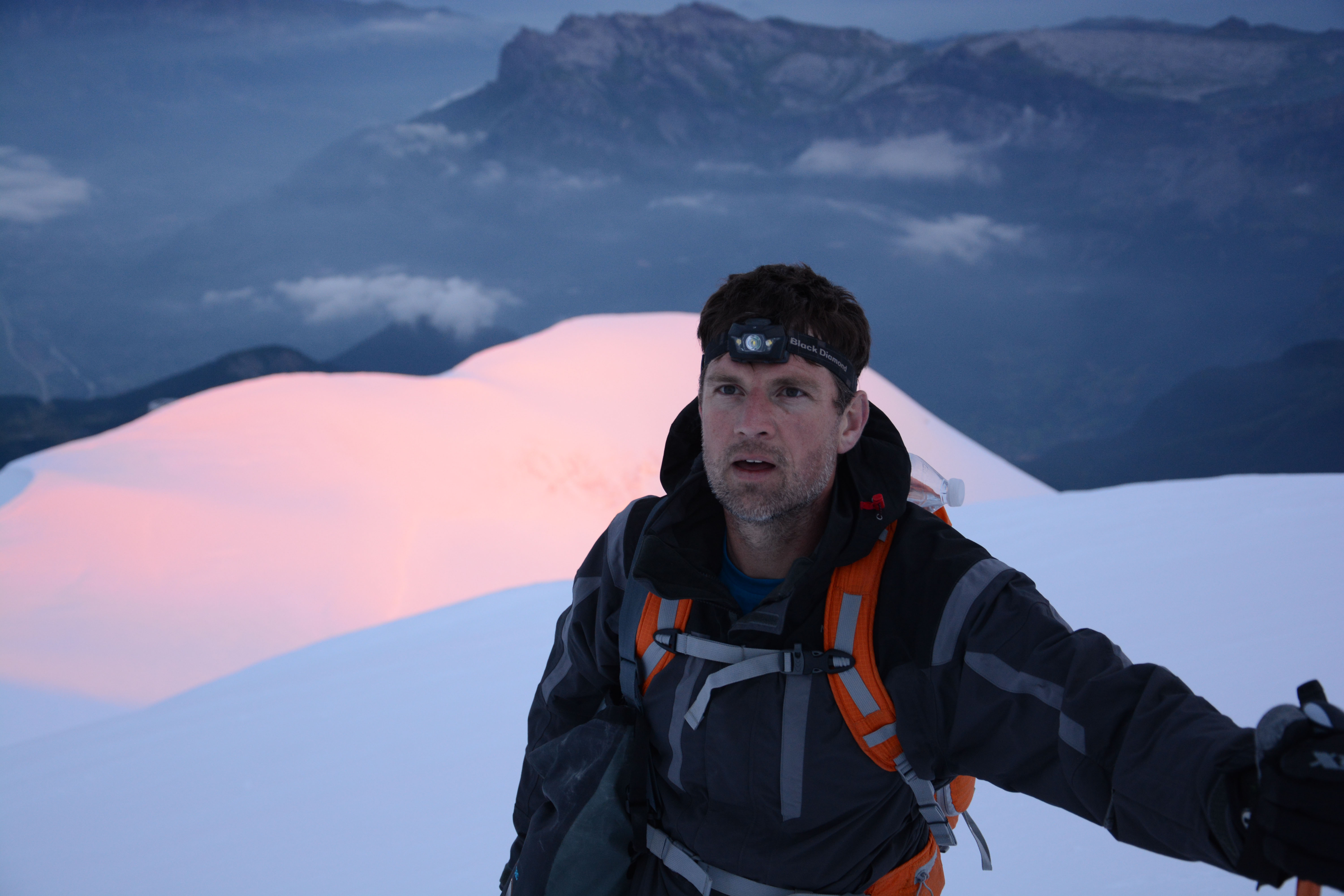
Author of Caving, Canyoning, Coasteering…, a recently released book about all kinds of outdoor adventures around Britain, Pat Kinsella has been writing about outdoor pursuits and adventure sports for two decades. In pursuit of stories he’s canoed Canada’s Yukon River, climbed Mont Blanc and Kilimanjaro, skied and mountain biked across the Norwegian Alps, run ultras across the roof of Mauritius and through the hills of the Himalayas, and set short-lived speed records for trail-running Australia’s highest peaks and New Zealand’s nine Great Walks. A former editor of several Australian magazines he’s a longtime contributor to publications including Sidetracked, Outdoor, National Geographic Traveller, Trail Running, The Great Outdoors, Outdoor Fitness and Adventure Travel, and a regular writer for Lonely Planet (for whom he compiled, edited and co-wrote the Atlas of Adventure, a guide to outdoor pursuits around the globe). He’s authored guides to exploring the coastline and countryside of Devon and Dorset, and recently wrote a book about pub walks. Follow Pat's adventures on Strava and instagram.